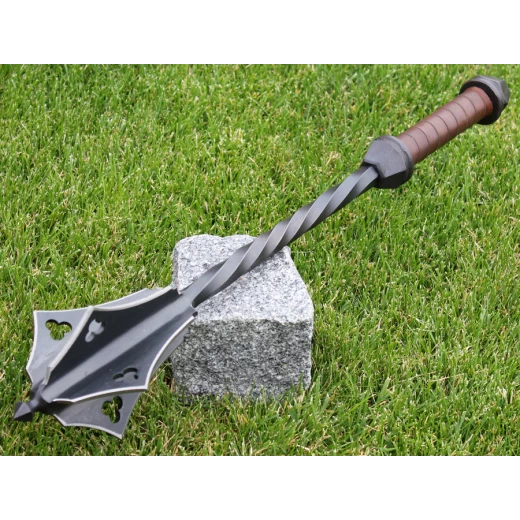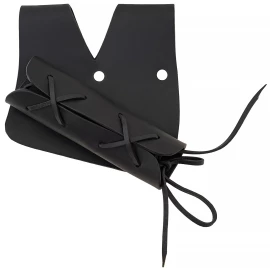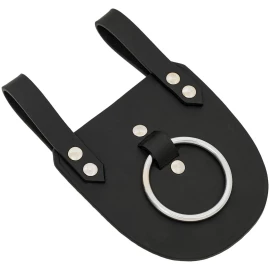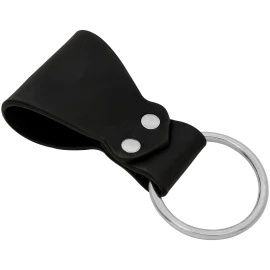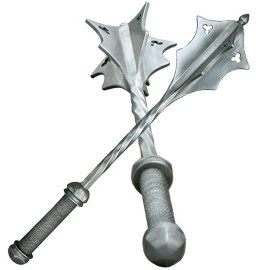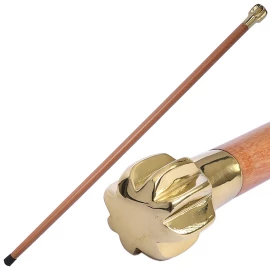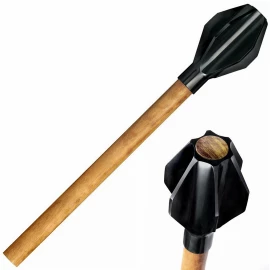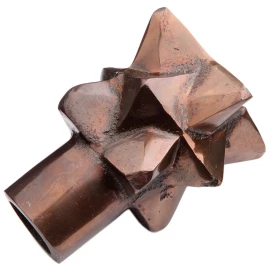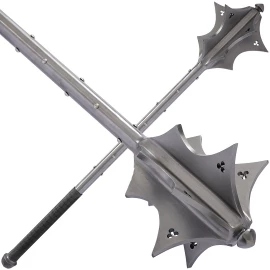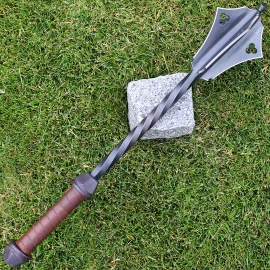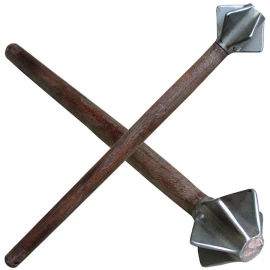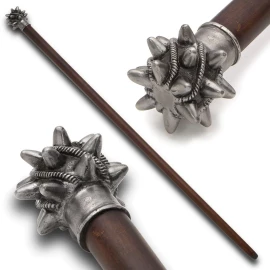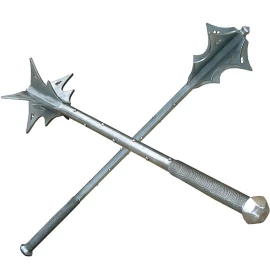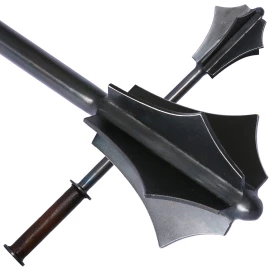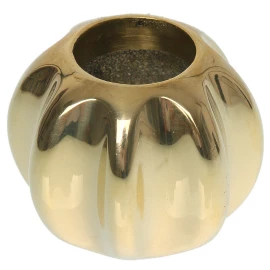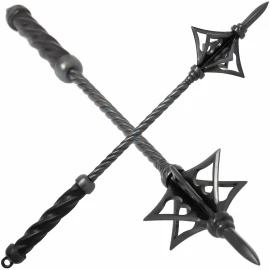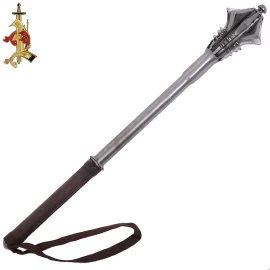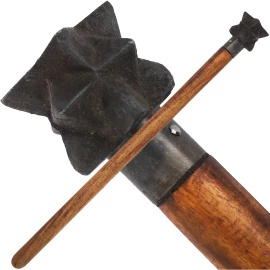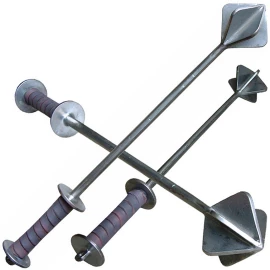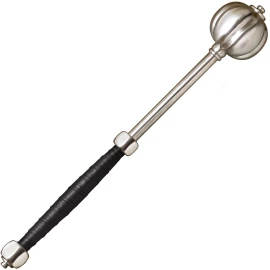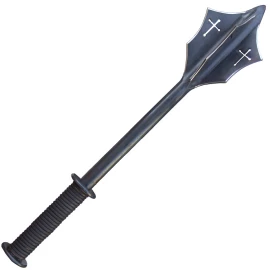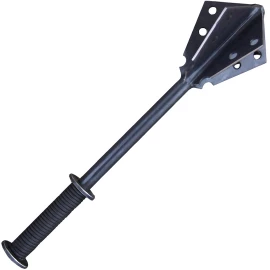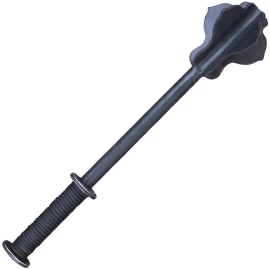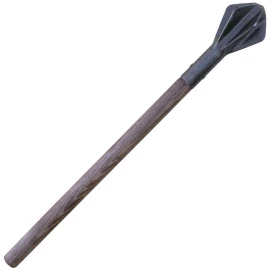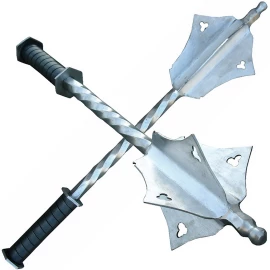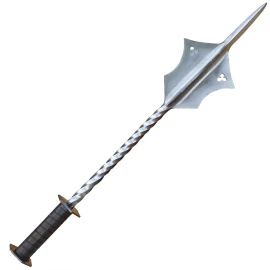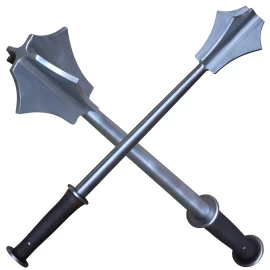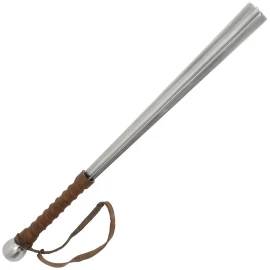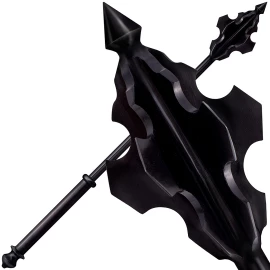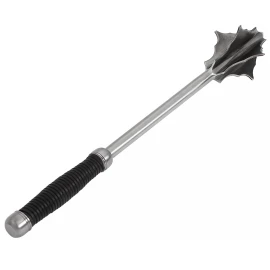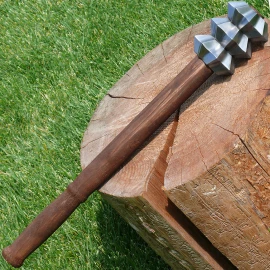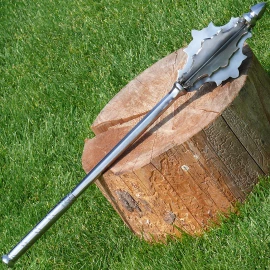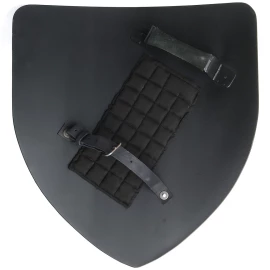Flanged mace
1xOne example of a mace capable of penetrating armour is the flanged mace. The flanges allow it to dent or penetrate thick armour. Flange maces did not become popular until after knobbed maces. Although there are some references to flanged maces (bardoukion) as early as the Byzantine Empire c. 900 it is commonly accepted that the flanged mace did not become popular in Europe until the 12th century, when it was concurrently developed in Russia and Mid-west Asia. More information...
Recommended offer
Flanged mace
- 60cm: overal length
- 15 x 5cm: approx. size of one flange
- 2170 g: weight
A mace is a blunt weapon that uses a heavy head on the end of a handle to deliver powerful blows. A development of the club, the military mace differs from a hammer in that the head of a mace is radially symmetric so that a blow can be delivered just as effectively with any side of the head. A mace consists of a strong, heavy, wooden or metal shaft, often reinforced with metal, featuring a head made of stone, copper, bronze, iron, or steel. The head of a military mace can be shaped with flanges or knobs to allow greater penetration of plate armor. The length of maces can vary considerably. The maces of foot soldiers were usually quite short (two or three feet, or 70 to 90cm). The maces of cavalrymen were longer and thus better suited for blows delivered from horseback. Two-handed maces could be even larger. The terms flail and mace are often, though incorrectly, used interchangeably.
We are here for you


